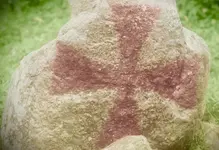Logic, btw, none of the coconut fibres actually originated in the Middle East that early. India, where they were manufactured into coir and is most logically where they came from, traded in the Middle East.
Vikings or Norse were not trading in the Middle East in the correct time period.
You also had Portuguese and Venetians, but they kept records, and were only sporadically in the Middle East in the 12th to 14th Century's.
Then there were the Templars, who were based in the Middle East from the early 12th Century until the 14th Century. In 1307, they had 18 vessels, most of which had just come from the Middle East, disappear from a French Atlantic seaport along with the newly appointed Grand Master who became the most wanted man in France. More recently coconut fibre is discovered on Oak Island dated to between the 12th and 15th century's (depends on who did the dating). Its all about logic, and as it stands, not proof but circumstantial evidence. Of course I was only commenting on Mr. Wonder's post in which he claimed, no Templars ever set foot on Oak Island.
Cheers, Loki





